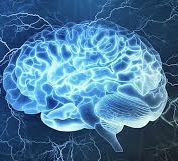(Total Views: 849)
Posted On: 11/15/2020 1:40:05 PM
Post# of 157303
“Metformin with the usual liver / kidney concerns.”
Investors can not get over the fact that drugs have side effects. Yes, drugs have side effects but what’s important is that those side effects occur in SOME patients. Providers always consider side effects when prescribing medications, but they understand how common that side effect is and what can increase the chances of that side effect (age, comorbidities, medications, etc.). Lactic acidosis and/or hepatotoxicity occurs is less than 1% of patients, are resolved by discontinuing the medication and has not been fatal.
Let’s play a game. The information below is the side effects from a very common drug. Look at all this terrible side effects one COULD get? Stevens-Johnson syndrome and systemic lupus erythematosus? Yikes. The name of the drug is at the end.
Oral:
>10%:
-Hematologic & oncologic: Decreased hemoglobin (7% to 23%)
-Hepatic: Increased serum alanine aminotransferase (≤15%), increased serum aspartate aminotransferase (≤15%)
1% to 10%:
-Cardiovascular: Edema
-Central nervous system: Dizziness (3% to 9%), headache, nervousness
-Dermatologic: Skin rash (3% to 9%), maculopapular rash, pruritus
-Endocrine & metabolic: Fluid retention
-Gastrointestinal: Epigastric pain (3% to 9%), heartburn (3% to 9%), nausea (3% to 9%), abdominal cramps, abdominal distress, abdominal pain, bloating, constipation, decreased appetite, diarrhea, dyspepsia, flatulence, nausea and vomiting, vomiting
-Hematologic & oncologic: Anemia, prolonged bleeding time
-Hepatic: Increased liver enzymes
-Otic: Tinnitus (<3%)
-Renal: Renal function abnormality
<1%, postmarketing, and/or case reports: Abnormal dreams, abnormal hepatic function tests, acidosis, acute renal failure, agranulocytosis, alopecia, amblyopia, anaphylactoid shock, anaphylaxis, anemia, angioedema, aplastic anemia, apnea, aseptic meningitis, auditory impairment, azotemia, blurred vision, bronchospasm, cardiac arrhythmia, cardiac failure, cataract, cerebrovascular accident, change in appetite, chills, coma, confusion, conjunctivitis, cystitis, decreased creatinine clearance, decreased hematocrit, depression, diplopia, DRESS syndrome (Koca 2016; Roales-Gómez 2014), drowsiness, duodenal ulcer, emotional lability, eosinophilia, epistaxis, eructation, erythema multiforme, exfoliative dermatitis, fever, gastric ulcer, gastritis, gastrointestinal hemorrhage, gastrointestinal perforation, gastrointestinal ulcer, gingival ulceration, glomerulonephritis, gynecomastia, hallucination, hearing loss, heavy menstrual bleeding, hematuria, hemolytic anemia, hemorrhage, Henoch-Schonlein purpura, hepatic failure, hepatic necrosis, hepatitis, hepatorenal syndrome, hepatotoxicity drowsiness, duodenal ulcer, emotional lability, eosinophilia, epistaxis, eructation, erythema multiforme, exfoliative dermatitis, fever, gastric ulcer, gastritis, gastrointestinal hemorrhage, gastrointestinal perforation, gastrointestinal ulcer, gingival ulceration, glomerulonephritis, gynecomastia, hallucination, hearing loss, heavy menstrual bleeding, hematuria, hemolytic anemia, hemorrhage, Henoch-Schonlein purpura, hepatic failure, hepatic necrosis, hepatitis, hepatorenal syndrome, hepatotoxicity (idiosyncratic) (Chalasani 2014), hyperglycemia, hypoglycemia, hypotension, increased serum creatinine, insomnia, jaundice, lymphadenopathy, melena, myocardial infarction, neutropenia, nonthrombocytopenic purpura, occult blood in stools, optic neuritis, palpitations, pancreatitis, pancytopenia, paresthesia, pneumonia, polyuria, pseudotumor cerebri, renal papillary necrosis, renal tubular necrosis, respiratory depression, rhinitis, scotoma, seizure, serum sickness, sinus bradycardia, sinus tachycardia, skin photosensitivity, Stevens-Johnson syndrome, systemic lupus erythematosus, thrombocytopenia, thrombosis, toxic epidermal necrolysis, urticaria, vasculitis, vesiculobullous dermatitis, vision color changes, vision loss, xerophthalmia, xerostomia
Drug: Ibuprofen
Investors can not get over the fact that drugs have side effects. Yes, drugs have side effects but what’s important is that those side effects occur in SOME patients. Providers always consider side effects when prescribing medications, but they understand how common that side effect is and what can increase the chances of that side effect (age, comorbidities, medications, etc.). Lactic acidosis and/or hepatotoxicity occurs is less than 1% of patients, are resolved by discontinuing the medication and has not been fatal.
Let’s play a game. The information below is the side effects from a very common drug. Look at all this terrible side effects one COULD get? Stevens-Johnson syndrome and systemic lupus erythematosus? Yikes. The name of the drug is at the end.
Oral:
>10%:
-Hematologic & oncologic: Decreased hemoglobin (7% to 23%)
-Hepatic: Increased serum alanine aminotransferase (≤15%), increased serum aspartate aminotransferase (≤15%)
1% to 10%:
-Cardiovascular: Edema
-Central nervous system: Dizziness (3% to 9%), headache, nervousness
-Dermatologic: Skin rash (3% to 9%), maculopapular rash, pruritus
-Endocrine & metabolic: Fluid retention
-Gastrointestinal: Epigastric pain (3% to 9%), heartburn (3% to 9%), nausea (3% to 9%), abdominal cramps, abdominal distress, abdominal pain, bloating, constipation, decreased appetite, diarrhea, dyspepsia, flatulence, nausea and vomiting, vomiting
-Hematologic & oncologic: Anemia, prolonged bleeding time
-Hepatic: Increased liver enzymes
-Otic: Tinnitus (<3%)
-Renal: Renal function abnormality
<1%, postmarketing, and/or case reports: Abnormal dreams, abnormal hepatic function tests, acidosis, acute renal failure, agranulocytosis, alopecia, amblyopia, anaphylactoid shock, anaphylaxis, anemia, angioedema, aplastic anemia, apnea, aseptic meningitis, auditory impairment, azotemia, blurred vision, bronchospasm, cardiac arrhythmia, cardiac failure, cataract, cerebrovascular accident, change in appetite, chills, coma, confusion, conjunctivitis, cystitis, decreased creatinine clearance, decreased hematocrit, depression, diplopia, DRESS syndrome (Koca 2016; Roales-Gómez 2014), drowsiness, duodenal ulcer, emotional lability, eosinophilia, epistaxis, eructation, erythema multiforme, exfoliative dermatitis, fever, gastric ulcer, gastritis, gastrointestinal hemorrhage, gastrointestinal perforation, gastrointestinal ulcer, gingival ulceration, glomerulonephritis, gynecomastia, hallucination, hearing loss, heavy menstrual bleeding, hematuria, hemolytic anemia, hemorrhage, Henoch-Schonlein purpura, hepatic failure, hepatic necrosis, hepatitis, hepatorenal syndrome, hepatotoxicity drowsiness, duodenal ulcer, emotional lability, eosinophilia, epistaxis, eructation, erythema multiforme, exfoliative dermatitis, fever, gastric ulcer, gastritis, gastrointestinal hemorrhage, gastrointestinal perforation, gastrointestinal ulcer, gingival ulceration, glomerulonephritis, gynecomastia, hallucination, hearing loss, heavy menstrual bleeding, hematuria, hemolytic anemia, hemorrhage, Henoch-Schonlein purpura, hepatic failure, hepatic necrosis, hepatitis, hepatorenal syndrome, hepatotoxicity (idiosyncratic) (Chalasani 2014), hyperglycemia, hypoglycemia, hypotension, increased serum creatinine, insomnia, jaundice, lymphadenopathy, melena, myocardial infarction, neutropenia, nonthrombocytopenic purpura, occult blood in stools, optic neuritis, palpitations, pancreatitis, pancytopenia, paresthesia, pneumonia, polyuria, pseudotumor cerebri, renal papillary necrosis, renal tubular necrosis, respiratory depression, rhinitis, scotoma, seizure, serum sickness, sinus bradycardia, sinus tachycardia, skin photosensitivity, Stevens-Johnson syndrome, systemic lupus erythematosus, thrombocytopenia, thrombosis, toxic epidermal necrolysis, urticaria, vasculitis, vesiculobullous dermatitis, vision color changes, vision loss, xerophthalmia, xerostomia
Drug: Ibuprofen

